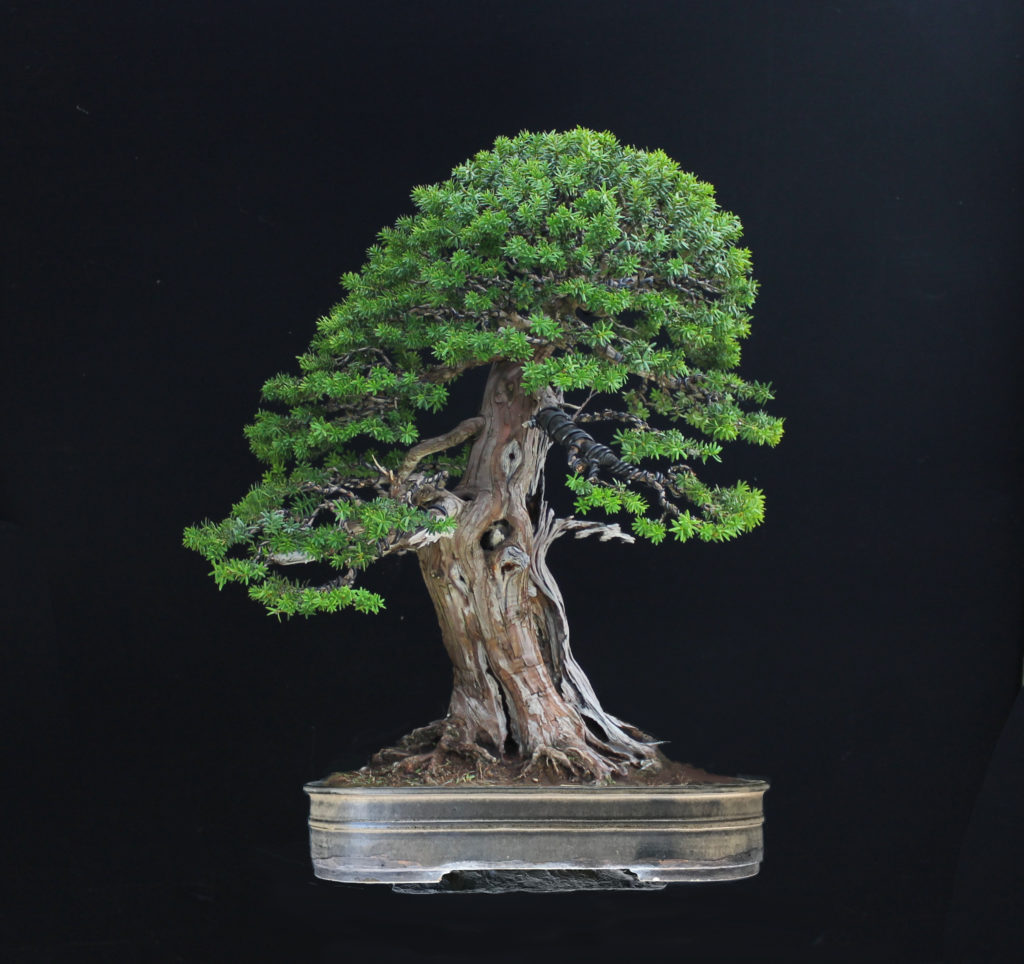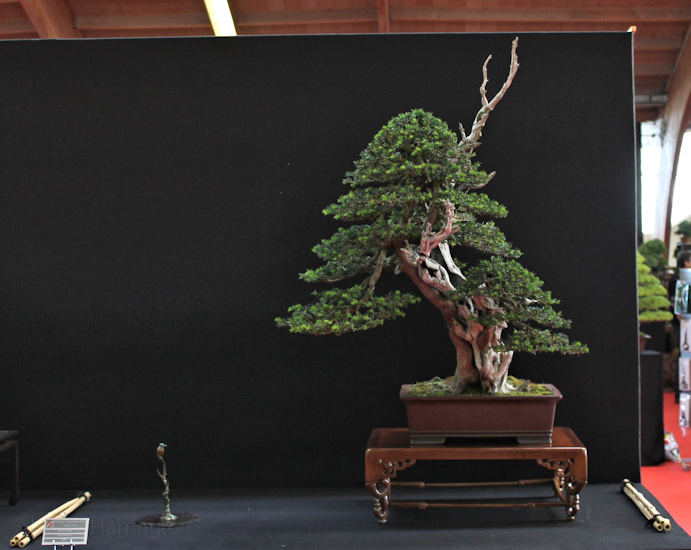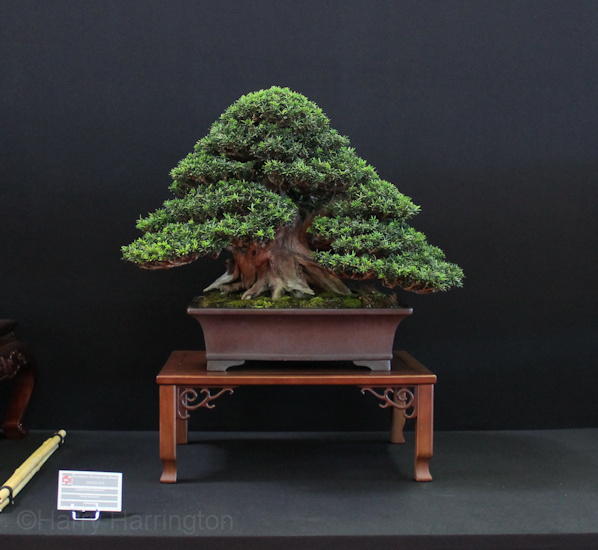
Taxus is a genus of 5 species of broadly-rounded to upright, dioecious, evergreen, coniferous large shrubs or trees. Yews are favoured for their reddish-brown, frequently peeling bark and the ability to withstand deep shade. The leaves of yews are highly poisonous as is the rest of the plant except for the fleshy aril of the fruit (but the seed itself is poisonous). Yews have flat, linear leaves to 2cm long that are arranged spirally around shoots and two-ranked like those of Tsuga species. Tsugas can generally be differentiated from Yews for their drooping branch habit. Tsugas also lack the peeling bark of Yews.
Yews can be found growing naturally in the under-storey of deciduous woods where they are able to withstand very low light-levels. Very old specimens are also commonly found planted in Churchyards; this practice dates back to medieval England when parishes were required to provide bows made of Yew, Churchyards were commonly the only areas fenced off from grazing animals that could be poisoned by feeding on Yew leaves and berries.
Yews are very slow growers with a very erect habit when young, with age, they tend to spread. Trunks tend to be on the slim side. On old specimens, a heavy and impressive trunk is likely to be the result of several smaller trunks fusing together. Yews are either male or female and in order to fruit, require a nearby tree of the opposing sex for pollination.
SPECIES USED FOR BONSAI
TAXUS BACCATA/ ENGLISH YEW
Native to Europe, North Africa to Iran where heights of between 10 and 20 metres are reached in maturity. T. baccata has dark-green leaves that are paler beneath. Yellow male cones are produced in Spring followed by red fruit in Autumn. T. baccata has a number of varieties available though these are not all as hardy and some are reported to grow poorly as bonsai.
TAXUS CUSPIDATA/ JAPANESE YEW
Native to north-east China and Japan where heights of around 10-15metres are usually reached, (the Japanese Yew being slower growing than its European relative). Taxus cuspidata has similar foliage to that of the English Yew but for the colour underneath the leaves which is yellow-green, turning red-green over winter. The Japanese Yew has a dwarf form T.c.’Nana’ which has a more compact habit.
TAXUS X MEDIA/ JAPANESE AND ENGLISH YEW HYBRID
A hybrid of garden origin, Taxus X media combines the vigour of Taxus baccata and the hardiness of Taxus cuspidata.
BONSAI CULTIVATION NOTES
POSITION: Will tolerate some sun but a shaded position with little direct sunlight is preferred. Will grow happily in quite heavy shade. Fully hardy to -10°C after which some protection should be given.
FEEDING: Every two weeks throughout the growing season.
REPOTTING: Due to their slow growth rate, Yews only need repotting every 3 to 4 years in Spring as new buds extend. For better results, repot in August-September as rootgrowth is strongest at this time of year.
Use a very free draining mix as Yews dislike very wet soils. Taxus/Yew are particularly fond of Pumice as a soil component and the use of pumice can rectify any health issues with Yew.
PRUNING: New growth needs to be plucked out during the growing season. However to retain fruits, do not pinch out after flowering in Spring. Hard pruning and branch pruning should be carried out in Autumn.
To encourage back-budding, pinch out 2 or 3 year old needles in late-Autumn. This will nearly always result in the stimulation of new buds in Spring at the points where needles were plucked.
PROPAGATION: Sow seed as soon as ripe, outside in Autumn. Seed can take 2 or more years to germinate and usually produces male trees. Take semi-ripe cuttings in late-Summer or early-Autumn. By layering in late Spring.
PESTS AND DISEASES: Resistant to almost all diseases except root-rot. Insect damage is likely to be from either tortrix moth caterpillars or yew scale.
STYLING: Suitable for all forms except Broom in all sizes.




